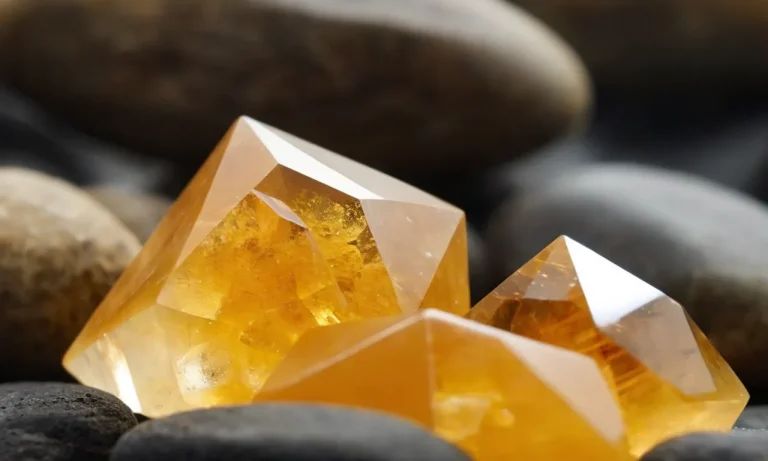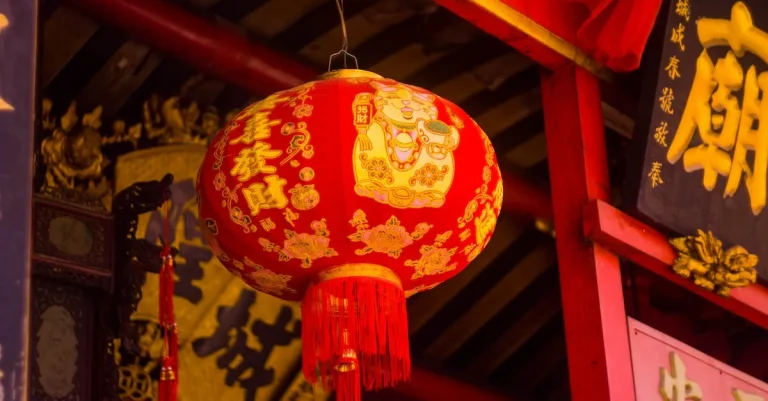Whether you’re looking at plants blooming in a garden or gazing upon a lush forest, nature’s beauty often comes in green hues. The rich, vibrant color of green is deeply symbolic in religions and spiritual practices around the world. For many, green represents renewal, life, nature, and energy.
If you’re short on time, here’s a quick answer to your question: The color green spiritually represents renewal, life, nature, and energy. It is associated with growth, harmony, freshness, safety, fertility, and environmentally-friendly practices.
In this comprehensive guide, we’ll explore the spiritual significance of the color green across cultures and belief systems. We’ll look at how green is viewed in major religions like Islam, Christianity, Hinduism, and Buddhism. We’ll also examine the meaning of green in New Age spirituality. From symbolizing rebirth to representing the heart chakra, we’ll cover all the major spiritual associations of the verdant color.
Green in Islam
In Islam, the color green holds great significance and is often associated with various aspects of spiritual and religious practices. Green is considered as the color of paradise and is highly revered in the Islamic faith. It is believed to symbolize renewal, growth, and fertility, reflecting the beauty of nature and the blessings of Allah.
The Importance of Green in Islamic Art and Architecture
Green is prominently featured in Islamic art and architecture, particularly in mosques and other religious structures. The extensive use of green tiles, calligraphy, and geometric patterns showcases the religious significance of the color. It is believed that the color green has a calming effect on the mind and soul, creating a serene and peaceful atmosphere for worship.
Green in Islamic Clothing
In Islamic culture, green is often worn as a symbol of piety and connection to the divine. Many Muslims choose to wear green clothing, particularly during special occasions and religious ceremonies. This practice is rooted in the belief that wearing green garments brings blessings and spiritual protection.
The Green Dome of Medina
One of the most iconic symbols of Islam is the Green Dome of Medina, located in Saudi Arabia. This majestic dome covers the tomb of the Prophet Muhammad (peace be upon him) and is adorned with green tiles. The color green has been associated with the Prophet, representing his teachings of peace, compassion, and harmony.
The Green Hadiqa in Paradise
In Islamic teachings, it is believed that there is a lush and beautiful garden called Hadiqa in paradise. This garden is described as being filled with greenery, flowing rivers, and abundant fruits. The color green is seen as a representation of this heavenly paradise and serves as a reminder of the ultimate reward for believers.
Green in Christianity
In Christianity, the color green holds significant spiritual meaning. It is often associated with renewal, growth, and life. This symbolism stems from various references in the Bible, where green is used to represent God’s creation, abundance, and the flourishing of nature.
Symbolism in the Garden of Eden
In the book of Genesis, the Garden of Eden is described as a lush paradise filled with greenery. The color green symbolizes the perfect harmony between God, humanity, and nature. It represents the flourishing of life and the abundance of God’s blessings.
Additionally, the forbidden fruit in the Garden of Eden is often depicted as an apple, which is typically green in color. This further reinforces the symbolism of green as a representation of temptation, sin, and the fall of humanity.
Green as a Symbol of Hope and Restoration
In Christianity, green is also associated with hope and restoration. This symbolism can be seen in the story of Noah’s Ark. After the great flood, a dove was sent out by Noah to find dry land. When the dove returned with an olive leaf, it was a sign of God’s promise and the restoration of life on Earth. The olive leaf, with its vibrant green color, became a symbol of hope and new beginnings.
Green Vestments and Liturgical Use
In Christian liturgy, green is the color of vestments used during Ordinary Time, which makes up the majority of the liturgical year. Ordinary Time is a period of reflection and growth in the Christian faith. The use of green vestments during this time represents the growth and maturation of the Christian journey, as well as the ongoing renewal and transformation of the soul.
Furthermore, green is commonly associated with the season of Advent, a time of preparation and anticipation leading up to Christmas. It symbolizes the arrival of new life and the hope of the coming Messiah.
It is important to note that the symbolism of colors can vary across different Christian denominations and cultural contexts. While green generally represents growth and renewal in Christianity, it is always best to consult specific religious texts or teachings for a more precise understanding of its significance in a particular context.
For more information on the symbolism of colors in Christianity, you can visit Learn Religions, a reliable source for religious information.
Green in Hinduism
In Hinduism, the color green holds great significance and is associated with various aspects of spirituality. It is often seen as a symbol of fertility, growth, and abundance. Green is believed to represent the natural world and the divine energy that flows through all living beings.
Green as a representation of Lord Shiva
In Hindu mythology, Lord Shiva is often depicted with a green complexion. This green color is said to symbolize his association with nature and his role as the destroyer of evil. Lord Shiva is also known as the “Lord of the Green” and is believed to have a deep connection with forests, plants, and animals.
Green as a symbol of rebirth and renewal
In Hinduism, the color green is also associated with rebirth and renewal. It is believed that green represents the cycle of life and death, and the continuous process of regeneration. This symbolism is often seen during festivals such as Holi, where people throw green-colored powders and water at each other to celebrate the arrival of spring and the rejuvenation of nature.
Green as a color of balance and harmony
In Hindu philosophy, green is considered a color of balance and harmony. It is believed to have a calming effect on the mind and the ability to promote emotional well-being. Green is often associated with the heart chakra, which is believed to be the center of love, compassion, and healing.
The spiritual significance of the color green in Hinduism reminds us of the interconnectedness of all living beings and the importance of nurturing and preserving the natural world. Embracing the color green can help us cultivate a deeper sense of spirituality and awareness of our connection to the divine.
Green in Buddhism
In Buddhism, the color green holds significant spiritual meaning and symbolism. It is associated with the natural world, growth, and renewal. Green represents the vibrancy and vitality of life, reminding us of the interconnectedness of all living beings. This color is often used in Buddhist art and iconography to evoke a sense of harmony and balance.
Symbolism of Green
Green is often seen as the color of tranquility and peace in Buddhism. It is believed to promote a sense of calmness and serenity, helping practitioners to cultivate mindfulness and inner peace. The lush greenery of forests and meadows is seen as a metaphor for the fertile ground of spiritual growth and enlightenment.
In Buddhist philosophy, green is associated with the element of air and the qualities of wisdom and compassion. Just as nature sustains and nourishes all living beings, these qualities are seen as essential for the well-being and happiness of both individuals and society as a whole.
Green in Buddhist Practices
The color green is often incorporated into Buddhist rituals and ceremonies. For example, green leaves and plants may be used as offerings to symbolize the offering of life and the interconnectedness of all beings. This practice serves as a reminder to cultivate gratitude and compassion towards all living things.
Green is also used in meditation practices. Visualizing a vibrant green light or focusing on the color green during meditation can help calm the mind and bring a sense of harmony and balance. This can be especially beneficial for those seeking to cultivate mindfulness and deepen their spiritual practice.
References:
- https://www.buddhistdoor.net/news/the-spiritual-meaning-of-colors
- https://www.buddhanet.net/e-learning/history/bu_color.htm
Green in New Age Spirituality
In New Age spirituality, the color green holds significant meaning and symbolism. It is often associated with growth, renewal, harmony, and balance. Green is believed to have a calming and soothing effect on the mind, body, and spirit, making it a popular color for meditation and relaxation practices. Many spiritual practitioners believe that green represents the energy of the heart chakra, which is considered the center of love, compassion, and healing.
The Healing Power of Green
Green is often seen as a symbol of healing and rejuvenation. In various spiritual traditions, green is associated with the natural world and the cycles of life. It is believed to promote physical and emotional well-being, helping to restore balance and harmony to the body and mind. Green is also associated with the element of Earth, representing grounding and connection to nature. Spending time in green spaces, such as forests or gardens, is believed to have a healing effect on both our physical and spiritual selves.
Green and the Heart Chakra
In the New Age spiritual tradition, each chakra is associated with a specific color, and the heart chakra is often represented by the color green. The heart chakra is believed to be the center of love, compassion, and emotional healing. It is associated with qualities such as forgiveness, empathy, and acceptance. Green is seen as the color of unconditional love and represents the openness and expansion of the heart. Meditating on the color green or surrounding oneself with green objects or nature can help activate and balance the heart chakra.
Using Green in Spiritual Practices
There are various ways to incorporate the color green into your spiritual practices. You can wear green clothing or accessories during meditation or healing sessions to enhance the energetic connection to the heart chakra. Surrounding yourself with green objects, such as plants or crystals like green aventurine or jade, can also help create a calming and nurturing environment. Additionally, spending time in nature, such as going for walks in green spaces or practicing forest bathing, can help you connect with the healing energy of the color green.
Remember, the spiritual meaning of the color green may vary between individuals and different spiritual traditions. It is important to explore the symbolism and significance of green in a way that resonates with your own beliefs and experiences.
Conclusion
In summary, green is widely considered a spiritual color representing renewal, freshness, growth, harmony, safety, and environmental awareness. Its verdant hues evoke nature, life, and energy across religions. Green symbolizes rebirth and resurrection in Christianity, tranquility and meditation in Islam, new beginnings in Judaism, and compassion and karma in Buddhism. In the New Age movement, green is associated with the heart chakra and expressing love.
So next time you see green’s abundant shades in the natural world, consider the deep spiritual meanings they may hold. Green’s lush tones continue inspiring renewal and growth for people across cultures and faiths.






